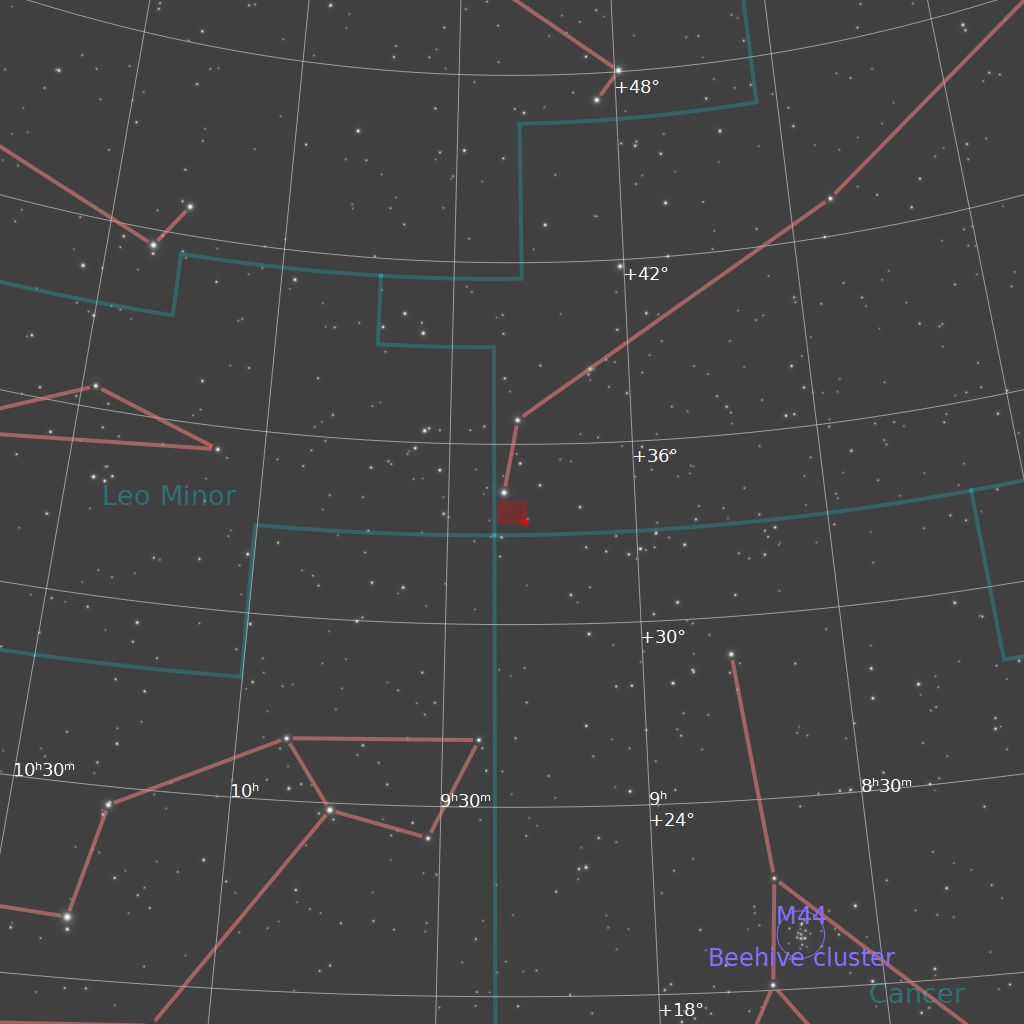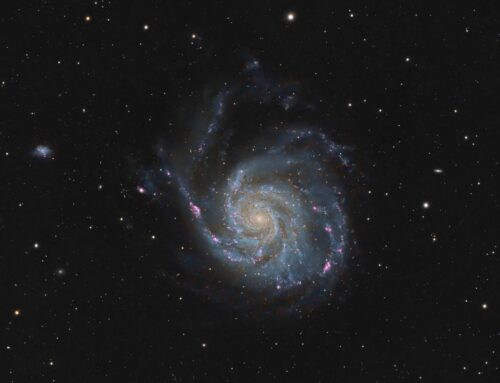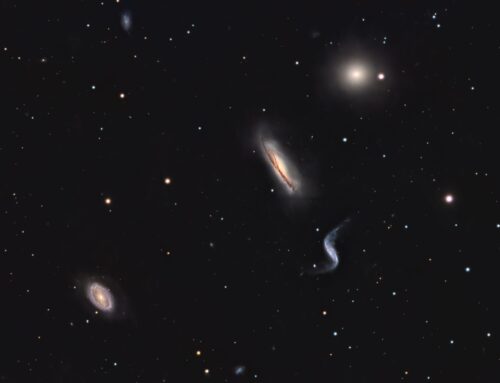NGC 2832 Galaxy Cluster

Click image for full size version
April 5, 2023
Galaxy season continues, with a pretty galaxy cluster centred on NGC 2832, in the constellation Lynx. NGC 2832 is about 340 million light years away, and is a little larger than our own Milky Way galaxy. It makes a tight triplet with NGC 2830 and 2831. See the annotated image for catalogue numbers and locations of the many galaxies dotted throughout the field.
Tekkies:
Acquisition, focusing, and control of Paramount MX mount with N.I.N.A., TheSkyX; unguided. Focus with Optec DirectSync motors and controller. Equipment control with PrimaLuce Labs Eagle 4 Pro computer. All pre-processing and processing in PixInsight. Acquired from my SkyShed in Guelph. Good transparency and seeing. Acquired March 14 – 19, 2023 under a moonless sky.
Sky-Watcher Esprit 150 f/7 refractor and QHY600M camera with Optolong UV/IR filter
Tak FSQ-106 @ f/5 (530mm), QHY-367C Pro One-shot colour, Optolong UV/IR filter
61x5m OSC = 5hr05m
Preprocessing: The WeightedBatchPreProcessing script was used to perform calibration, cosmetic correction, weighting, registration, local normalization and integration of all frames, plus DrizzleIntegration for the OSC data (2x with ddrop shrink=0.9).
Alignment of Master Frames: The Drizzled OSC master was aligned to the Luminance master with StarAlignment. This yielded aligned Lum and Colour masters.
Gradient Removal: DynamicBackgroundExtraction was applied to both masters.
Colour Calibration: SpecrophotometricColorCalibration was used to calibrate the OSC master.
Deconvolution: BlurXterminator was used on each master with a custom psf FWHM determined with the PSFImage script, and star sharpening set to 0.10 with “Correct First” selected.
Linear Noise Reduction: NoiseXterminator was applied to each image with settings Amount=0.9 and Detail=0.15
Stretching: HistogramTransformation was applied to each image to make a pleasing yet bright image.
Nonlinear Processing
Luminance addition: LRGBCombination was applied to replace the lightness of the RGB image with the Luminance master.
Star Removal: StarXterminator was used to remove the stars, with Unscreen selected
Nonlinear Noise Reduction: NoiseXterminator was used to reduce noise in the background areas of the image with settings Amount=0.9 and Detail=0.1
Star Processing: The lightness was extracted from the stars-only image and used as a mask on that image. Curves was applied to boost saturation. The MorphogicalTransformation was applied to shrink the stars slightly (Morphological selection mode, Selection = 0.3, Amount 0.75, 3×3).
Star Restoration: PixelMath expression combine(starless, stars, op_screen()) was used to combine the starless and stars-only images created with StarXterminator.
Final Steps: Background, galaxy and star brightness, contrast and saturation were adjusted in several iterations using CurvesTransformation with masks as required. ICCProfileTransformation (sRGB IEC61966-2.1; Relative Colorimetric with black point compensation) was applied prior to saving as a jpg. Image was annotated with the AnnotateImage script. Finder chart was made using the FindingChart process.








Gorgeous image! I could never get tired of looking at Ron’s images!